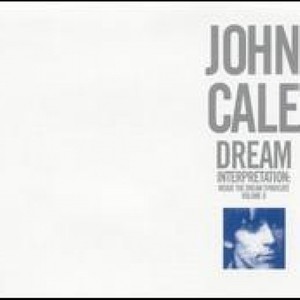
- 歌曲
- 时长
简介
by Thom JurekWhat may be confusing to punters coming to this series of recordings for the first time is the way in which the Inside the Dream Syndicate recordings are numbered. This second volume is the follow up to Day of Niagara: Inside the Dream Syndicate, Vol. 1. Cale's own first solo disc for TOTE, Sun Blindness Music, is unrelated to this series -- at least numerically; culturally, it is the first of three recordings under his own name, and this one is the second. Confusing, eh? It hardly matters, as all of these recordings were assembled under the loving and perceptual tutelage of Tony Conrad from his own collection of tapes. Where Sun Blindness Music featured a solo John Cale in deep experimentation with the sound and textures of minimalism, Dream Interpretation in pieces dating from the mid- to late 1960s, reveal Cale to be an even more restless composer and instrumentalist. Half the pieces here are solo, and the others in collaboration with Conrad or Angus MacLise. The title track, which opens the album, is a 20-minutes-plus study of intertwining whole tone drones as conducted by electric viola and violin. Here feedback, noise, and modulating sonorities are the sum and total of the piece, which, for all it's sinewy long tones, rocks. Next is a pulsing five-minute Vox organ piece utilizing stereo effects to create an effect not unlike the intro to Terry Riley's "In C." The most difficult work here, "Untitled - for Piano" from 1965, which is a route of the insides of the instrument in every conceivable way. The other Conrad and Cale piece, "A Midnight Rain of Green Wrens at the World's Tallest Building," is much shorter, and moves strictly in minor mode and is constructed of whole tone drones and pitch modulations. It's haunting, creepy, and it should have been 20 minutes instead of three minutes and 20 seconds. Finally, "Hot Scoria" has MacLise rattling the heck out of a cimbalom as Cale attempts to match sonorities and microtones on a guitar. With the former instrument's pockets of reverberation and metallic rancorousness and the percussive nature of MacLise's playing, Cale moves across scalar washes of chords and strains of detuned glissando. The effect is as devastating as the rock & roll on the Velvets' "Sister Ray." In all this is a dynamic volume that picks up the pace from Sun Blindness Music and extends the reach of Day of Niagara and proves once again that La Monte Young's claim that he was the defining moment in minimalism is just insane.







